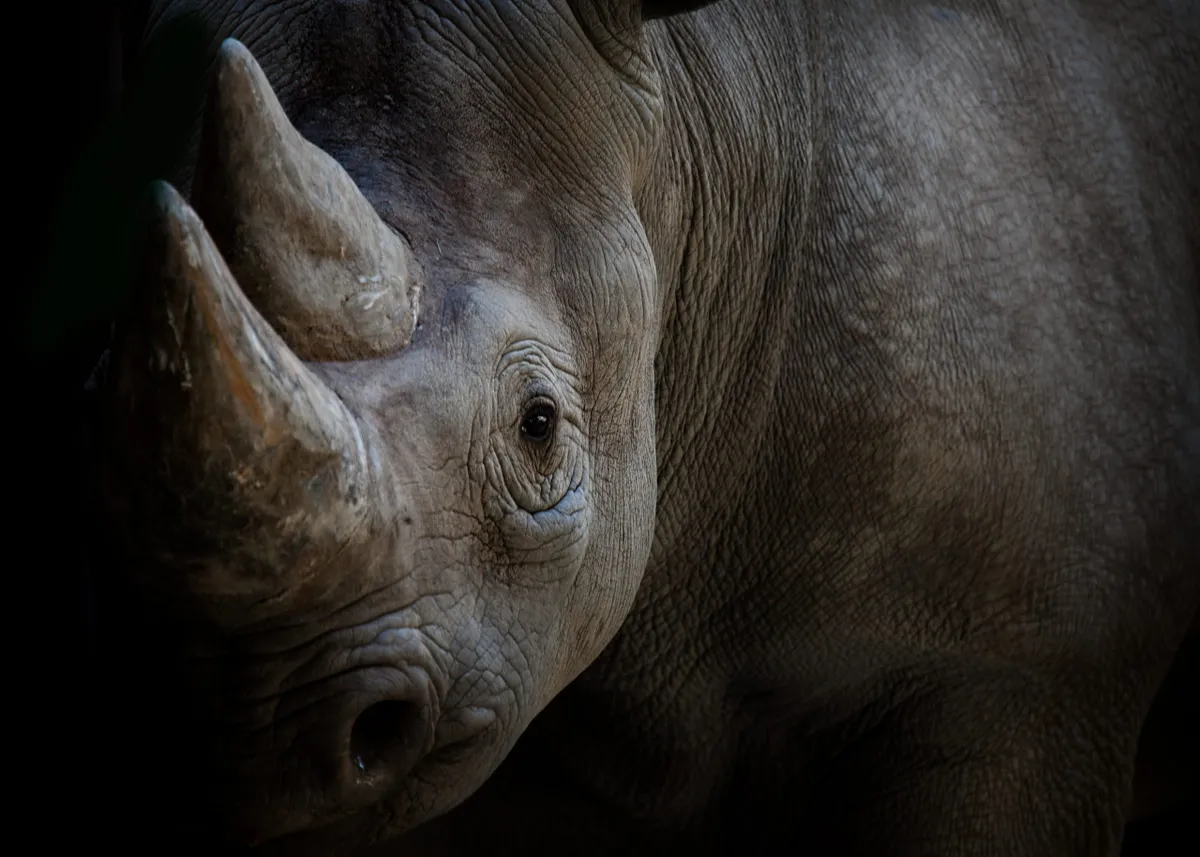Rhinos were once commonly found in Europe, Africa and Asia, and Africa, sadly today there are fewer than 30,000 rhinos in the wild. There are five species of rhino left - two species are found in Africa and three in Southern Asia.
Our expert rhino guide explains how to identify the different species, where they live, diet and conservation efforts.
Where does the name 'rhinoceros' come from?
Two Greek words, 'rhino' meaning nose and 'ceros' meaning horn combine to create the word rhinoceros, although rhinoceros is most commonly abbreviated to rhino.
What's the collective noun for rhinos?
A group of rhinos is called a crash.
How many species of rhino are there?
There are five extant species of rhino - white and black (found in Africa), Indian, Javan, and Sumatran (found in southern Asia).
The white rhino name likely derives from the Dutch word ‘wijd’ meaning wide, which refers to the animal’s wide mouth, whilst the black rhino was so-named to distinguish it from the white rhino.
Here are the five species of rhino:
1
Black rhino

2
White rhino

The white rhino species is considered to be Near Threatened on the IUCN Red List and consists of two extant subspecies, the southern white rhino and the northern white rhino.
There are an estimated 20,000 southern white rhinos living in the wild, of which more than 90 per cent are found in South Africa.
In 2018 the last male northern white rhino died
3
Greater-one horned rhino (also known as Indian rhino)

4
Javan rhino

In the thick forests of Indonesia, lives a rare and solitary mammal – the Javan rhino. Its global population stands at just 68 individuals, all confined to the Ujung Kulon National Park in West Java, and it is very difficult to see one in the wild.
Learn more about Javan rhino
5
Sumatran rhino

The Sumatran rhino is the smallest of the world’s 5 rhino species.
Although still fairly sizable, standing nearly 5 feet at the shoulder and weighing 600-950kg, this rhino is diminutive indeed compared to the largest species, the white rhino. These hefty beasts can measure over 6ft at the shoulder and weigh up to 3,600 kg. Only elephants overtake them as the largest extant land animal.
Learn more about Sumatran rhinos
What do rhinos eat?
The black, Javan and Sumatran species are browsers, wrapping their prehensile upper lip around leaves and twigs when foraging. White and India rhinos are considered to be grazers.
Are rhinos related to any other animals?
Rhinos are part of a group of animals called Perissodactyla, which are odd-toed ungulates. There are only three extant animal famillies in this group - Rhinocerotidae (rhinos), Equidae (horses, zebras and asses) and Tapiridae (tapirs).
How many teeth do rhinos have?
Rhinos have between 24 to 34 teeth, depending on the species.

Is rhino horn medically useful?
Rhino horns are made of keratin, the same substance that makes up our nails and hair. It has no medical properties despite being used in traditional Asian medicine.
How well can rhinos see and hear?
Rhinos have fantastic hearing and a great sense of smell, but have terrible eyesight. They will struggle to spot something further than 30m away.

Why do rhinos love mud?
Rhinos love wallowing. By covering themselves with mud and letting it dry they are protecting their skin from the sun. Rhinos will rub their bodies against tree trunks and rocks to remove ectoparasites, such as ticks, which have become stuck in the dry mud on their skin.

How quickly do rhinos reproduce?
Rhino gestation lasts between 15 and 16 months, usually giving birth to just one calf (twins are very rare). Young rhinos will remain with their mothers until they are between two or three years old.
Do rhinos mark their territories?
Rhino home ranges are marked with dung heaps called middens that are used by both male and females to communicate their whereabouts and reproductive condition.
Why do rhinos let birds sit on them?
Oxpeckers have a symbiotic relationship with rhinos. Rhinos have a host of ectoparasites on their hide that the birds eat, keeping the rhino free of parasites. The oxpeckers can also raise the alarm, warning the rhino if any danger is about.

Why rhinos are endangered?
Illegal poaching has led to all five of the rhino species becoming endangered. 13 rhinos were killed for their horns in South Africa in 2007 – it means poaching has escalated by 8,900 per cent in just eight years.
The beginning of 2016 has seen two significant developments in the increasingly desperate battle to stop rhino poaching in Africa.
First, South Africa released figures showing that illegal killing within its borders dropped marginally in 2015 – down from 1,215 in 2014 to 1,175 last year.
But conservationists argue that poaching in the continent as a whole reached a record high.
